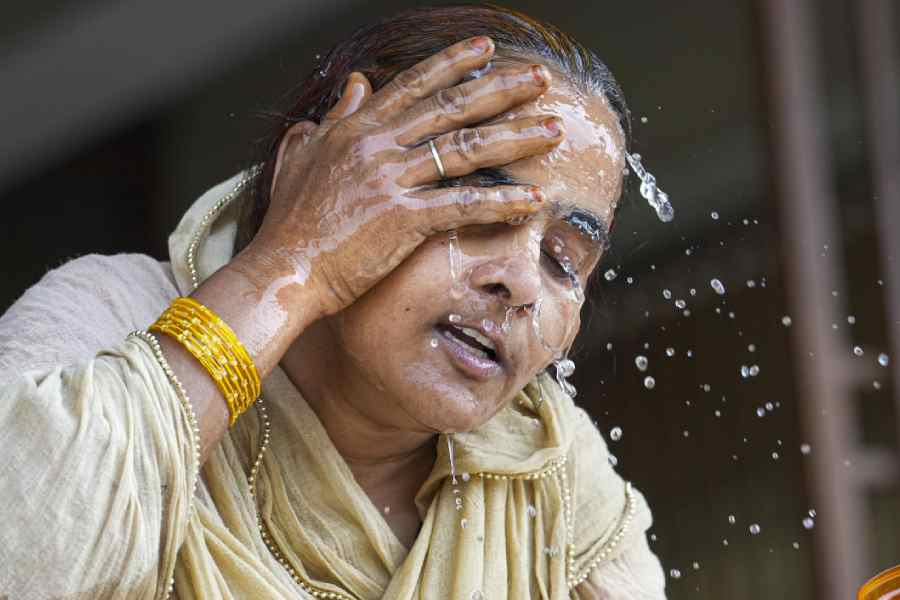Maximum temperatures crossed 48 degrees Celsius on Wednesday at multiple locations across the northern Indian plains under extreme heatwave conditions, considered dangerous to health, but India’s weather department has predicted a gradual fall in temperatures from Thursday.
A heatwave warning map released by the India Meteorological Department (IMD) had placed at least eight of the country’s 36 meteorological subdivisions under the red zone, implying a “very high likelihood of heat illness and heat stroke in all ages”.
The IMD said many parts of Rajasthan, Haryana-Chandigarh-Delhi and Uttar Pradesh and some parts of Bihar, Madhya Pradesh and Punjab experienced temperatures 4.5 degrees Celsius to 6.4 degrees Celsius above expected normal. At some locations, the maximum temperatures rose 6.5 degrees Celsius or even higher than normal.
An automatic weather recording station at a location called Mungeshpur in Delhi recorded a maximum temperature of 52.9 degrees Celsius, but the IMD said on Wednesday night that it was probing whether the reading was the result of an instrument error.
The IMD said the maximum temperatures in Delhi on Wednesday as recorded by its five departmental observatories and 14 automatic weather stations ranged between 45.2 degrees Celsius and 49.1 degrees Celsius in different locations. The 52.9 degrees Celsius reading at Mungeshpur is “an outlier” compared to other stations and… “could be due to error in the sensor or local factors”. The IMD said it was examining sensors and other factors that might have led to the higher reading.
The extreme heatwave conditions that have persisted across the northern Indian plains over the past 10 days have prompted some state authorities to direct school closures or temporary respite from outdoor work to curb the risk of heat-related illness.
Delhi lieutenant governor V.K. Saxena on Wednesday directed that paid breaks for construction workers between noon and 3pm should continue until temperatures fall below 40 degrees Celsius, a PTI report said. The governor has also directed that earthen pots with drinking water be arranged at bus queue shelters to provide relief to bus passengers and water tankers deployed to sprinkle treated wastewater on roads.
The Bihar government on Wednesday ordered the closure of all government and private schools, coaching institutions and government childcare centres until June 8, after reports of several students fainting in schools under extreme heatwave conditions, PTI reported.
The maximum temperatures on Wednesday touched or exceeded 48 degrees Celsius in Mahendragarh (49.4 degrees Celsius), Nuh (49 degrees Celsius), and Rohtak (48.8 degrees Celsius) in Haryana; in Allahabad (48.8 degrees Celsius), Kanpur (48.4 degrees Celsius), and Agra (48.0 degrees Celsius) in Uttar Pradesh; in Aurangabad (48.2 degrees Celsius) in Bihar; and Bhatinda (48.5 degrees Celsius) in Punjab.
But rainfall and thunderstorms associated with a western disturbance — a storm originating near the Mediterranean Sea — along with winds blowing in from the Arabian Sea are likely to cause temperatures to gradually fall from Thursday.
“Already, the temperatures this evening over Delhi are between 3 to 4 degrees lower than they were yesterday (Tuesday) evening,” Rajendra Kumar Jenamani, a senior IMD scientist, said. “And we expect them to fall further.”
The IMD has predicted a “gradual fall” in maximum temperatures by 3 degrees Celsius to 4 degrees Celsius over northwestern and central India over the next three to four days. It said the maximum temperatures were very likely to rise over eastern India over the next three days and gradually fall thereafter.











